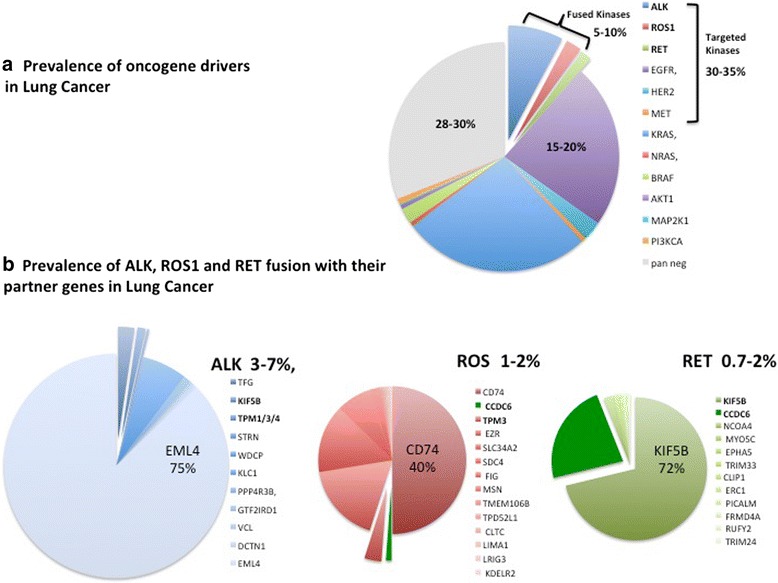Fig. 1.

a) 70% of NSCLC show the activation of the indicated oncogene drivers while 30% are considered pan negative. Among the NSCLC carrying an oncogene driver, the identified alteration occurs in a tyrosine kinase (overall 30%–35% of NSCLC) that can be target of therapy. In a 30% of the NSCLC carrying an activated kinase (overall 5–10% of NSCLC) the activation is due to the fusion with a partner gene. b) Several genes are involved as partner in fusion to ALK, ROS1 and RET kinases in NSCLC. The impaired function of the partner gene may alter the cell signaling of the kinase and promote the cancer cell addiction to the oncogene. The involvement of the partner gene in NSCLC is related to its occurrence in the fusion with multiple kinases. Few genes, highlighted in bold, are recurrent partners in tyrosine kinase fusions in NSCLC. The common partner genes are sliced out of the large group of partner genes listed in the diagram
